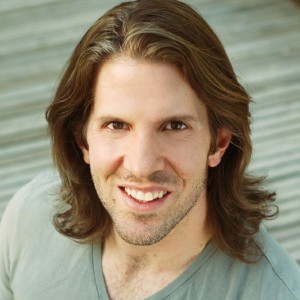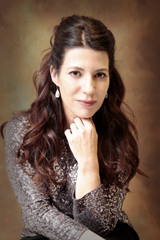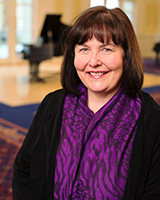INTERMEZZO CHAMBER MUSIC SERIES, Vieve Gore Concert Hall, July 28
The theme was big and bold at Monday’s Intermezzo Chamber Music Series concert. Three works were on the program that put the technical skills of the Utah Symphony’s two percussionists, Eric Hopkins and Keith Carrick, to the test — as well as the keyboard prowess of three of Salt Lake City’s preeminent pianists, Vedrana Subotic, Kimi Kawashima and Karlyn Bond. All five gave tour de force performances, as did local tenor Brian Stucki, who opened the concert with Hopkins in Iannis Xenakis’ stirring Kassandra.
Based on the Greek myth of Cassandra, who was both blessed and cursed by the ability to foresee the future, the piece is scored for male voice and percussion. The singer has to depict both Cassandra and the elders, requiring the performer to extend his range by extensive falsetto singing as well as plumbing the depths of his range. He also has to on occasion accompany himself on a psaltery.
Stucki gave a powerful account, singing with conviction and imbuing his role with emotional and expressive depth. It’s a challenging role but Stucki made it his own.
The dramatic percussion part punctuates and complements the vocal line. Hopkins, too, gave a forceful and virtuosic performance that was vibrant and compelling.
The other two works on the program focused on the piano.
Subotic and Kawashima, along with the two percussionists, mesmerized the large audience in Vieve Gore Concert Hall with a stellar reading of Béla Bartók’s Sonata for Two Pianos and Percussion. One of the composer’s most significant works, the sonata is a virtuosic piece for the four players. It’s effect lies in part in the intricate interplay among the four musicians, and this quartet of players were absolutely intuitive as collaborators.
The two pianists played with an intensity that captured the relentless drive of the music. That was mirrored in Hopkins and Carrick’s playing as well. All four underscored the energy of the work with their robust playing, while in the Lento movement they captured the mysterious otherworldliness that Bartók so deftly created.
For the final work, Nicolai Kapustin’s Concerto for Two Pianos and Percussion, Subotic teamed up with Bond, while Carrick played a trap set, leaving the array of percussion instruments in Hopkins’ hands.
Kapustin’s concerto is a whirlwind of jazz idioms and virtuosic writing for all four players. It’s an overwhelming piece that demands players of the highest technical and musical talent— and these four certainly delivered. It was another stunning performance of a work that is relentless in its high octane energy and rhythmic vitality.



